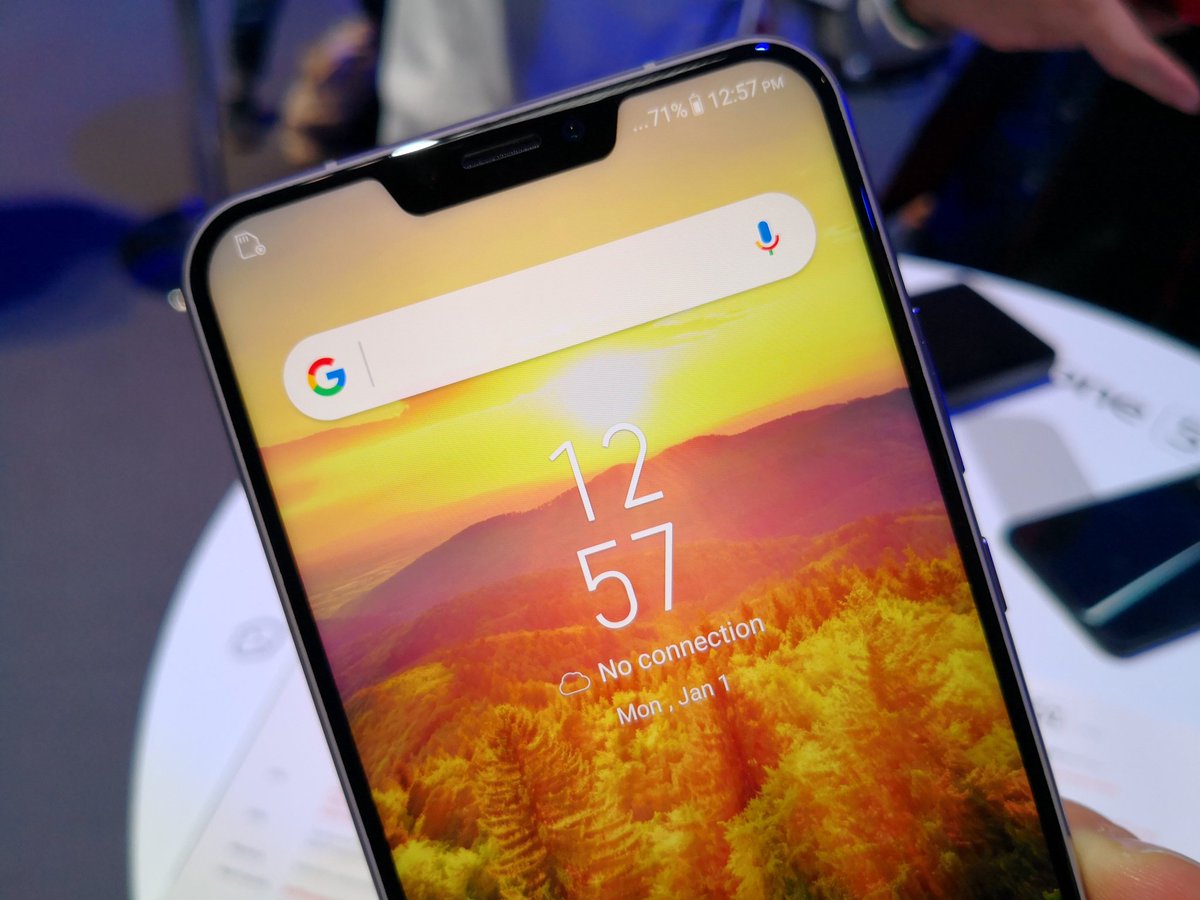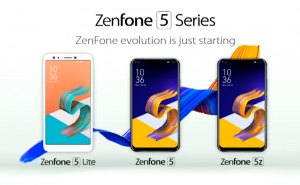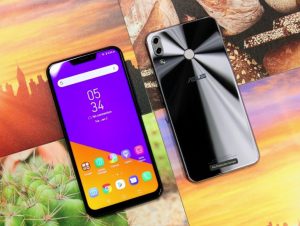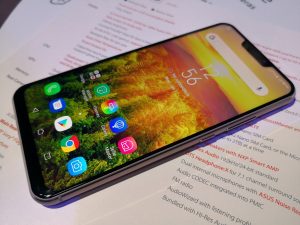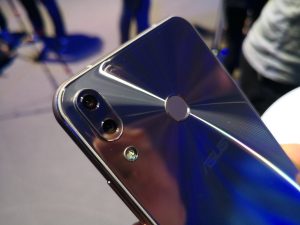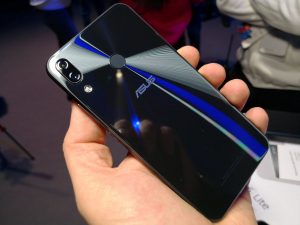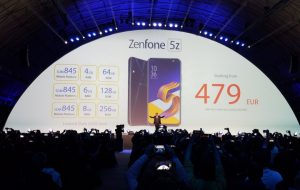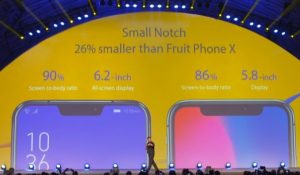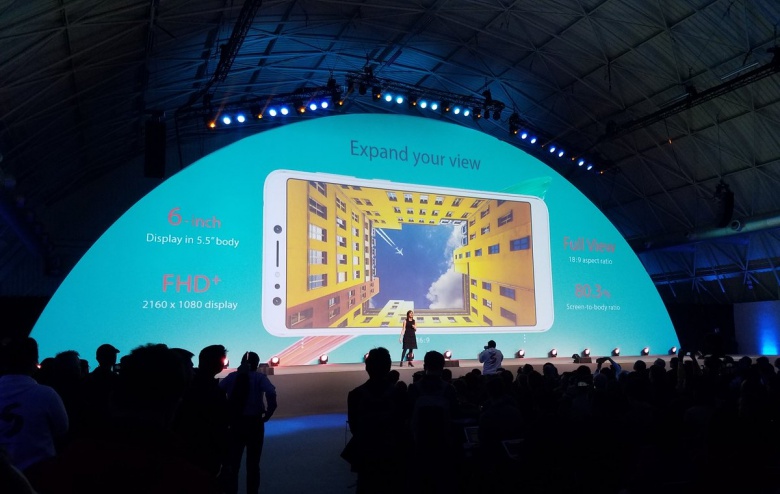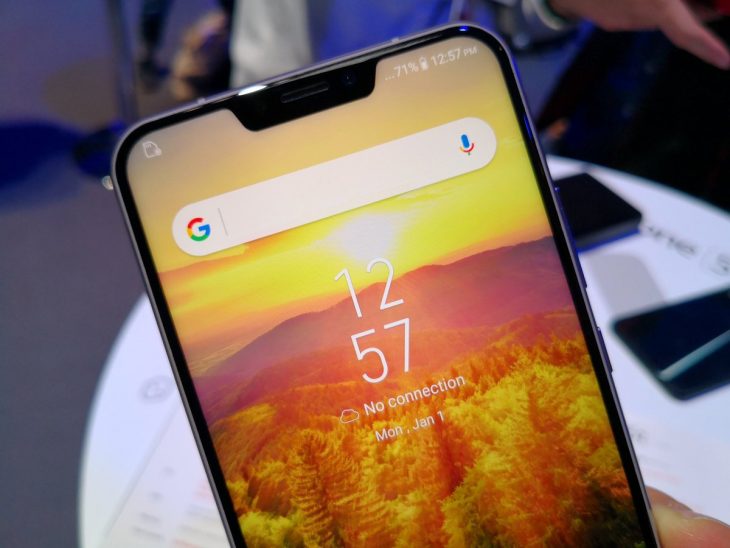
For some years many of us have said that they’d love an iPhone hardware that ran Android. In recent times we have had options that were very similar and now Asus have taken it one step further and copied Cupertino’s latest with a phone that is is no doubt going to be their 2018 flagship model.
At MWC 2018 in Barcelona Asus have announced a quartet of new phones ranging throughout all market segments. The new phones are the ZenFone 5Z, the ZenFone 5, the ZenFone 5Q (or 5 Lite in some markets) and the Max Plus M1. While Asus has not brought a phone directly here in a few years a lot of people do acquire them through grey market importers so we have decided to touch on them. Their design is also possibly a sign of things to come from the larger Android manufacturers and should be touched upon.
Asus ZenFone 5Z
The ZenFone 5Z is the big Daddy of them all and packs some very decent specs within it’s iPhone X-looking body. There will be three variants of it: 4GB/64GB, 6GB/128GB and 8GB/256GB – There is also a microSD slot that doubles as a second SIM card slot. All variants will run Qualcomm’s latest and greatest, the Snapdragon 845 and have a 6.2 inch FHD with a 90% screen to body ratio — I am unsure how the notch fits into the whole screen resolution measurement but maybe someone will need to standardise this for future Android phones.
The rear camera will be a dual camera setup with a 12MP f/1.8 main lens and a 12MP 120 degree wide angled lens as the secondary lens. The front-facing camera will be a 8MP f/2.0 setup. The phone will be powered by a 3300mAh battery with “BoostMaster” and “AI Charging”. The phone will be a dual sim phone and will launch running Android version Oreo with Asus ZenUI 5.0 on top of that. As with many other manufacturers Asus have also included their own fast face unlock technology which they say can unlock the phone in 0.1 seconds.
Asus have included a LOT of AI within the software of the phone including in the camera app in a couple of areas, AI-governed charging, AI screen on and more. How well they work will be interesting considering Asus do not have a huge Android footprint.
The phone looks to be a stunning phone, well designed and well crafted but it will be interesting to see just how well the notch plays with Android. Hopefully we can get our hands on one to check it out. It will be available in Midnight Blue and Meteor Silver and is going to be retailing at a relative attractive price around the $500US mark when it is available in June of this year.
Asus ZenFone 5
The ZenFone 5 has whatappears to be the exact same body as the ZenFone 5Z but if powered by a less powerful, but still capable processor, the Snapdragon 636. It will come in 4gb and 6GB RAM variants, each with 64GB of onboard storage and will still have the 6.2 inch FHD display with the notch. There is also a microSD slot that doubles as a second SIM card slot.
The ZenFone 5 will include all the same AI technology that the 5Z includes and house the the same battery as it as well. The cameras seem to be the same specifications as the 5Z but will lack the PDA and four axis OIS of the 5Z. It will also be available in Midnight Blue and Meteor Silver.
Asus ZenFone 5Q/Lite
Notch begone. The ZenFone 5Q maintains a high screen to body ratio (80.3%) through it’s 6 inch FHD 18:9 display ratio and small top and bottom bezels but does away with the notch. The phone is powered by a Snapdragon 630 and arrives in a 3GB/32GB and 4GB/64GB variants with a microSD slot for added storage (dual sim AND microSD slots). Both are powered by a 3300mAh battery.
The ZenFone 5Q comes with a dual front camera (20MP f/2.0 and a 120degree wide angled camera) and a dual rear camera setup with a 16MP main camera and a 120 degree wide angled secondary camera.
The phone will also be running Android Oreo with ZenUI 5.0 on top.
Available in Midnight Black, Rouge Red and Moonlight White there is no pricing on it yet but expect it to sit third in line from the above two phones.
Asus ZenFone Max M1
The ZenFone Max M1 is Asus’ entry-level phone but is still packing some decent specs in an attractive body. The display is a 5.5 inch 18:9 aspect ratio HD display with an 83% screen-to-body ratio. It will be powered by the Snapdragon 430 and will be available in 2GB/16GB, 2GB/32GB and 3GB/32GB variants.
The phone will include dual rear cameras (13MP f/2.0 and a wide-angled secondary camera) and a dual front camera setup (13MP/8MP). The battery inside is a whopping 4000mAh battery and includes a fingerprint sensor (not a given in entry-level phones unfortunately). There are three slots once again — 2 SIM card slots and a microSD slot.
Impressively it will run Android Oreo with ZenUI on top and will be available in Deepsea Black, Sunlight Gold and Ruby Red. At this stage pricing and availability are unknown but expect it to be priced alongside other entry- level phones.
Asus have produced a lot of phones in recent years with every little addition getting a brand new moniker. This year, at this stage, there are only 4 but the two that will gather the most attention will be the notched phones.
It will be interesting to see if they have adapted ZenUI to account for the notch in apps or whether it will remain intrusive until Google fixes it within Android. There is very little doubt that these will be the last notched Android phones so we expect some more serious work will need to be done by Google to allow for this.
These phones appear to be some decent looking phones with decent enough specs considering the prices. The ZenFone 5Z may well end up being the cheapest SD845 available on the market and as such should be considered if you are looking for a value for money phone.
Unfortunately they will be unlikely to make it to our shores officially but if you are interested hit up all the usual grey market importers and try your luck. We’d love to hear the thoughts on the phones from anyone who buys one.

